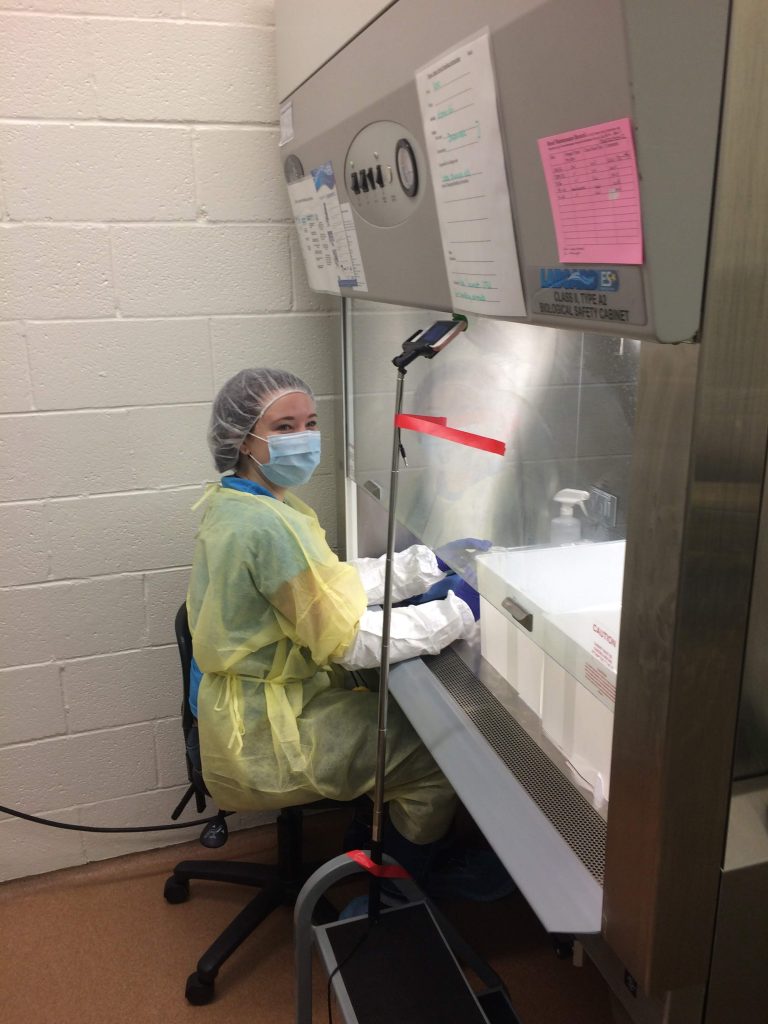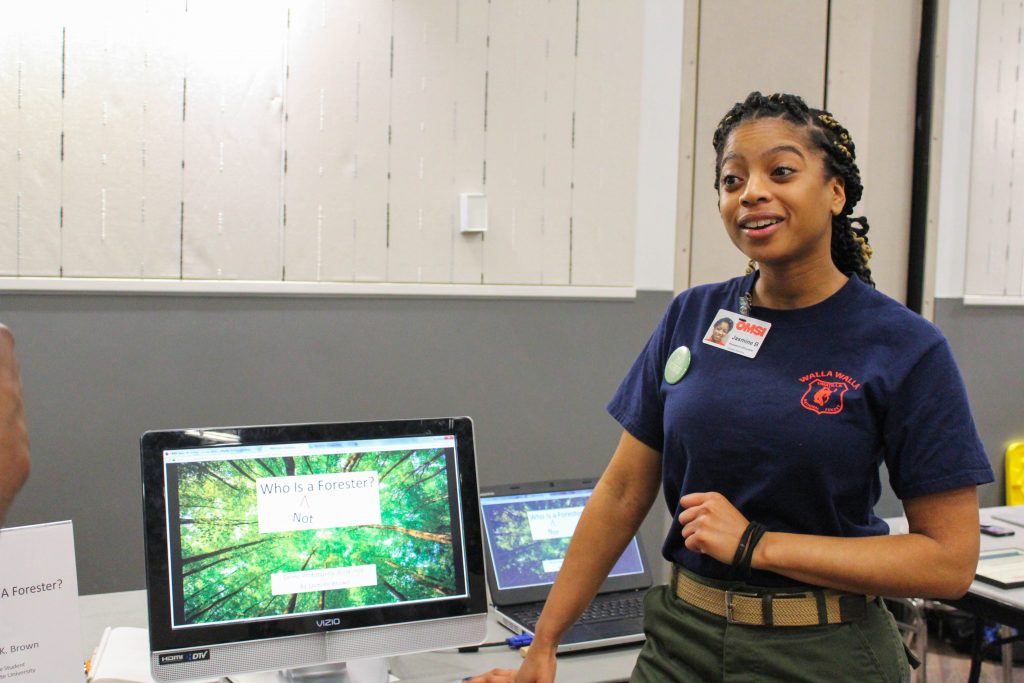Trillions of bacterial cells are living within us and they’re controlling your brain activity.
Grace Deitzler is a 2nd year PhD student in microbiology working in Dr. Maude David’s lab on the gut-microbiome and its relation to autism spectrum disorder.

The gut-microbiome is the total population of bacteria living within our digestive tract. These bacteria are critical for digestive health, but also for our immune system and mental health. For example, we harbor bacteria capable of digesting plant fibres we otherwise could not digest. And if you’ve been told that probiotics are good for you, that’s because probiotics can change the gut microbiome in a positive way, allowing for increased bacterial diversity associate with improved health. These bacteria communicate with each other through chemical signaling but also communicate with us. Tryptophan, for example, is an amino acid produced through bacteria metabolism and is a precursor for serotonin, a brain-signaling chemical which causes feelings of happiness.
When the gut communicates with the brain, we call this, the “gut-brain axis”. Grace’s work narrows in on the gut-brain axis and more specifically, how one bacterial species in particular impacts autism spectrum disorder. To further complicate things, the gut-microbiome helps to regulate estrogen levels, and we also know that autism is a disorder found primarily in biological males. Which leads Grace to one of her biggest questions: are the bacteria involved in endocrine system regulation in women, also that responsible for this variation we see. Grace uses a mouse model to elucidate underlying mechanisms at play.

Step one is to feed the mice bacteria that have been found in elevated amounts in people with autism spectrum disorder than in neurotypical peers. These bacteria will colonize in the gut, and mice will go through several behavioral tests to determine if they are exhibiting more behaviors associated with autism. Grace performs three types of tests with the mice: one to test inclination to form repetitive behaviors, one to test anxiety, and one to test social behaviors. One test is a marble-burying test, in which a mouse more inclined to form repetitive behaviors will bury more marbles.
After behavioral testing is complete, the mice are sacrificed and different regions of the gut are taken to look for presence of bacterium. Tissues taken from the mice are used to look for transcriptional markers. The transcriptome is collected for both the mouse and the bacteria present, or the sum total of all genes that are read and converted to RNA. RNA are able to be isolated and sequenced using distinctive markers such as a “poly-A tail”. After this data is collected, Grace can finally move to the computational side of her work which involves combining biological and biochemical data with her behavioral studies.
In addition to her work on autism spectrum disorder, Grace also has a side project working in a honey bee lab, looking at the gut microbiome of honey bees in response to probiotics on the market for beekeepers. But Grace is one very busy bee herself because in addition to her lab work, she’s also involved with an art-science club called “seminarium”. The club is filled with scientists interested in art and artists interested in science. Grace is a painter primarily but is also working on ink illustration. The focus of this group is that art and science are complimentary, not at odds. The group has produced some collaborative projects, including a performance for a lab studying a parasite that effects salmon. The group put together a collage of interpretations of the parasites and had a performance in which one member played piano while someone else drew the parasite live.
Grace moved to Oregon from St. Louis Missouri. She completed her undergraduate degree in biological sciences with minors in chemistry and psychology at a small engineering college, Missouri University of Science and Technology, where she was a radio DJ! Grace first became involved in research during a summer internship in a microbiology lab at Washington University. There she studied the vaginal microbiome and how it effects pregnancy outcomes. Grace went back to this lab for the next couple summers and produced 4 publications! Ultimately, Grace graduated college early after they offered her a full time research position where she worked for a year and a half as a research tech. Through this experience, Grace came to realize that medical school was not her path, canceled her scheduled MCAT and signed up for GRE. Grace looked for schools in the PNW because she knew she wanted to live there, got an interview at OSU, loved it, and here we are!


Join us at 7 pm on Sunday, August 11th, 2019, to hear more about Grace’s research and her journey to OSU. Stream the show live on KBVR Corvallis 88.7FM or check out the episode as a podcast after a few weeks.


